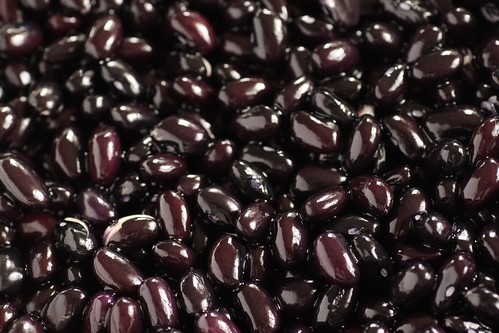
November usually means Thanksgiving countdowns and elaborate holiday recipes — which are totally forthcoming! However, in between plotting complicated multi-course meals and how to cram pumpkin into one more dish, I wanted to get back to basics.
Beans.
I love me some beans. I like to make a big batch and use some right away, some within a few days, and freeze the rest for later. Canned beans are inexpensive, but dried beans are downright cheap. I buy mine in bulk amounts which border excessive for a family of two.
Beans I normally stock:
- Black turtle beans
- Chickpeas (garbanzo beans)
- Pinto beans
- Canellini (navy) beans
- Assorted lentils
Other than quick-cooking lentils, I follow the same steps for the rest.
How to Cook Dried Beans
Notes
Beans store pretty much indefinitely, but the older they are, the longer they take to cook. Your best bet is often bulk bins with high turnover. We sometimes get dried beans from our CSA, or of course you can grow and dry your own!
Beans are often dusty and can contain errant small rocks or other beans, so rinse them and pick over them carefully.
Soaking
Soaking beans (and nuts, seeds, and grains) is good for several reasons. Specifically for beans, it reduces cooking time. Soaking beans is also said to reduce the gas-inducing side effects of our fiber-filled friends.
I soak my beans overnight and let the water work while I sleep, though you could also soak them while you’re at work all day. For a cup of dried beans, I add about 3 cups of water and a teaspoon of salt. The next morning, I pour the water off, rinse well, and move on to cooking.
Cooking
While you can use beans in sweet preparations, I haven’t, so I prepare my beans for a savory destiny.
Beans go in the pan, water covers the beans plus 2 inches. Their friends garlic and bay leaves jump in the hot tub, and if half an onion is languishing in the fridge it goes in, too.
Bring everything to a boil for a few minutes, then cover and reduce to a simmer. I set the timer for half an hour, though (as mentioned in Notes, above) cooking times will vary depending on the size of the beans and how fresh they are. If you’re cooking these in the morning, you can go shower and get dressed during this stage.
The beans are done when you can blow on a bean and its skin peels back, and you taste 5 beans and they’re all soft. Side benefit: your whole house will smell awesome. If you overcook them, they’re perfect for pureed soups, refried beans, or bean spreads (like hummus)!
Storing
Unless I’m using them right away, I let my beans cool to room temperature in the covered pan. Store them in their broth in the fridge for a few days, or in the freezer. Freeze flat in zip-top plastic bags to save space!
Using home-cooked beans in place of canned
Canned beans often contain salt (and possibly other preservatives), so make sure to taste as you cook and adjust the salt levels as needed.
Most dried beans approximately triple in volume when cooked, so if a recipe calls for a 15-ounce can, that’s about 1/2 cup dried beans or 1 1/2 cups drained cooked beans.
A few of my favorite bean recipes:
- Cuban Black Bean Stew
- Spicy Jalapeno Black Bean Burgers
- Quick Quinoa Salad
- Tlacoyo Masa Pockets
- Chickpea and Potato Stew
What’s your favorite use for beans?

- 1 cup dried beans
- 1 teaspoon salt
- 2 cloves garlic, peeled
- 2 dried bay leaves
- Rinse beans in a sieve and check for small pebbles or random stray beans. Place in a large bowl and cover with 3-4 cups water. Add salt. Let stand overnight (6-8 hours).
- Drain and rinse beans. Add beans, garlic, and bay leaves to a pot and cover with water plus 2 inches. Bring to a boil. Cover and reduce to a simmer. Simmer for half an hour, then test beans. Blowing on a bean should cause the skin to peel, and 5 beans should all be softened through. Older or larger beans may take up to an hour.
- Scoop out beans to use right away. Let the rest cool to room temperature and store in the cooking broth. Refrigerate for several days or freeze.
Prep time: Cook time: Total time: Yield: about 3 cups





{ 2 comments… read them below or add one }
I just got into soaking and cooking chickpeas this year, in an effort to avoid canned foods. So much better!
Thanks for sharing all this great info.
Liesl recently posted..How Beautifully Leaves Grow Old.
Thanks for stopping by, Liesl! I agree – I’m fairly salt-sensitive, so using beans I’ve cooked myself is really helpful.